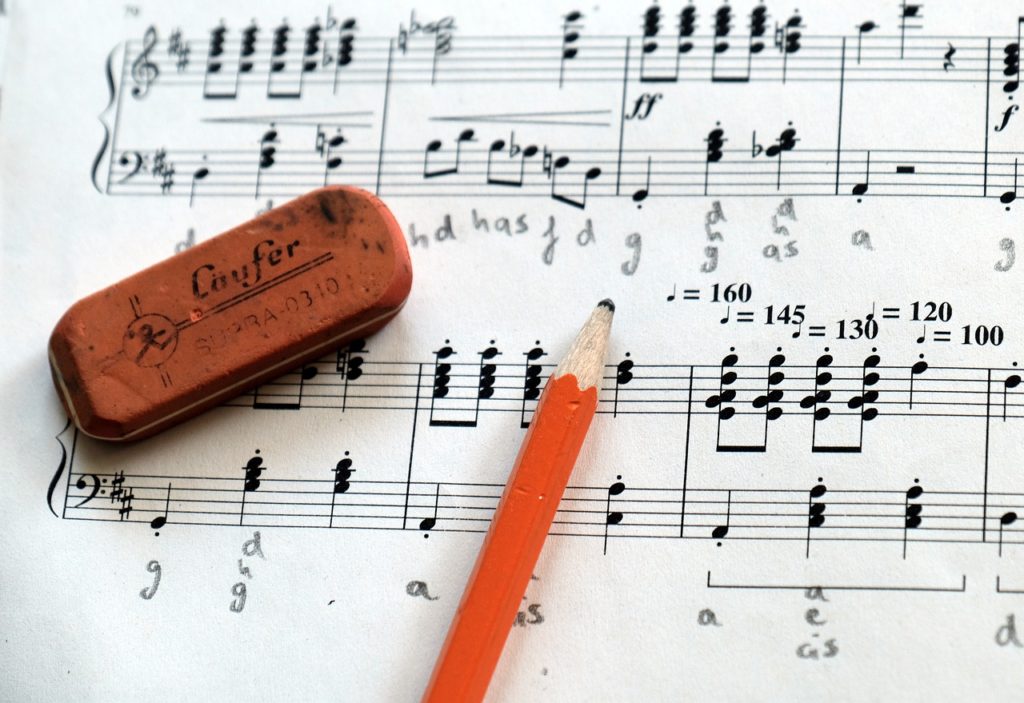Pivot chord modulation is your first strategy for changing keys in your songwriting. The pivot chord modulation reduces the impact of the shifting keys.
It adds variety without being too jarring, and it uses the versatility of the pivot chord to pave the way to the new key. You do this by choosing a chord that exists in both the old and new keys.
Example 1 and 2 (above) show the potential pivot chords between the keys of C and G major, indicated by asterisks. Any one of the marked harmonies could be used as pivot chords for a smooth and seamless key transition.
Example 3 (below) demonstrates a pivot chord modulation in action in a pop ballad piano accompaniment style. It uses the second IV chord in bar 3 as the link between the keys of C and G major.
The C major chord exists as a I chord in the key of C major, but it also exists as a IV chord in G major. By the end of the section, G major has been fully established as the new key. Typically, you would return to C major later in the song.


